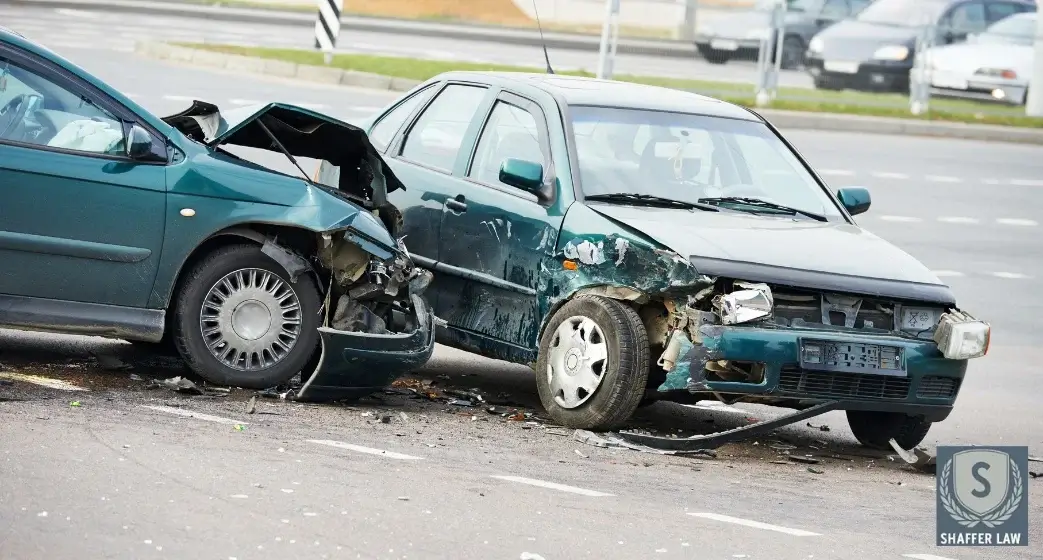The Risk of Intersection Accidents in Downtown Los Angeles: How to Protect Yourself


The risk of intersection accidents in downtown Los Angeles has been a priority for the Los Angeles Department of Transportation (LADOT). In fact, the city has identified high-injury intersections, deemed priority intersections, and miles of street projects that promote the Vision Zero initiative, which aims to see zero fatalities.
Some of the identified intersections include Hollywood Boulevard and Western Avenue, which lies on a stretch of Western from Washington to Century that saw 136 severe or fatal accidents occur between 2010 and 2019. Left-turn calming is one way the LADOT is improving the safety of pedestrians at this intersection by installing hardened centerlines, median extensions, and/or wedges that require vehicles to turn at a tighter right angle.
What Causes High-Risk Intersections in Downtown Los Angeles?
Intersection accidents are very common in busy cities like LA, but several factors contribute to the increased risk of intersection accidents in urban thoroughfares. For example, distracted driving is one of the leading causes of intersection accidents in LA and across the country. Navigating traffic on their phones, impatiently running a red light, or accidentally ignoring a stop sign can cause severe consequences for drivers that just aren’t worth it.
Outdated and complex traffic patterns often lead to accidents because downtown roads require astute driving, and the confusion of so many lanes sometimes results in illegal turns or lane change accidents. Pedestrian accidents are also common in Downtown LA, especially around Olvera Street and heavily trafficked tourist areas like Hollywood Boulevard and Highland Avenue. In such high-footfall zones, accidents are not unusual, and victims may suffer serious personal injury due to outdated and complex traffic patterns.
Speeding is another common culprit of accidents in downtown Los Angeles. Drivers who are in a hurry or who just have a habit of driving fast cause a lot of issues at old intersections where traffic signals and road signs need updating. This reckless behavior often results in dangerous T-bone accidents, especially where visibility is limited or signals are poorly timed. The LADOT is in the process of replacing outdated equipment and roadways throughout the city of Los Angeles as part of the Vision Zero initiative.
Impaired driving is another big factor in intersection accidents. Alcohol-impaired drivers cause more accidents at night than they do in the daytime. Drivers should take a ride-share or sleep it off before endangering the lives of everyone else on the road. Staying off the roadways at night unless absolutely necessary can minimize fatalities due to impaired drivers.
How to Protect Yourself From the Risk of Intersection Accidents in Downtown Los Angeles
The optimal way drivers in LA can stay safe on the road and behind the wheel is to stay alert and pay attention to what’s going on around them. If you are driving, do not focus on anything else except the task of driving. Avoid checking your phone notifications. Use voice instructions from your GPS to avoid glancing down at your phone, and don’t reach down to the floorboard or the backseat when you are behind the wheel.
Another way to stay safe on the road is to observe traffic signals. If you are paying attention and focused on the road, you will be able to anticipate yellow lights that are about to turn red. It is always safer to wait rather than rush through a stoplight. By staying focused on the road, drivers also stay aware of speed limit changes.
Being a defensive driver is also critical in maintaining safe roadways in downtown Los Angeles. Drivers should stay back far enough from the driver in front of them to anticipate erratic behaviors from other drivers, such as sudden braking. It’s important to have enough time and room to react to other vehicles.
Finally, prioritizing pedestrians and their safety can make Downtown Los Angeles roads safer. Drivers should keep an eye out for anyone unexpectedly crossing the street and be prepared to stop for one of the thousands of pedestrians who cross the roads of LA. Tourists often do not pay attention to cars as closely as they should, and they may walk around in unpredictable patterns.
FAQs:
Q: Where Do Most Car Accidents Happen in Los Angeles?
A: Most Los Angeles car accidents occur on just 3.8% of roads. These roads are the most dangerous intersections and roadways in the city, and half of all fatal injuries that are a result of collisions on county-maintained roadways occur on the same roads. Los Angeles County’s Vision Zero prioritizes its focus on improving the infrastructure of these roads and communities.
Q: What Is the Number 1 Cause of Accidents in an Intersection?
A: About one-third of all intersection fatalities in the United States occur in signalized intersections, and a large portion of those are the result of drivers running red lights. Traffic lights and other traffic signals that notify drivers and pedestrians which directions of traffic have the right of way only work when everyone follows them every time.
Q: Are Intersections High Risk?
A: Yes, intersections are high-risk traffic areas for a number of reasons. When you have a cross-section of cars going in both directions and turning in all directions, this can contribute to accidents due to human error. When you add in pedestrians and bicyclists, who are especially vulnerable trying to cross amid traffic lights constantly directing the flow of traffic, this can also confuse drivers. Other factors can be drivers failing to stop or misjudging their speed when a light changes.
Q: What Is the Busiest Intersection in Los Angeles?
A: There are multiple intersections in Los Angeles that see daily traffic volumes of more than 100,000 vehicles passing through them, and they are especially busy during peak hours. These include Wilshire Boulevard and Veteran Avenue, Sunset Boulevard and Highland Avenue, and Long Beach Boulevard and Imperial Highway.
Shaffer Law – Exceptional Record of Success
Everyone who drives can contribute to lowering the risk of intersection accidents in Downtown Los Angeles. If you do get into an intersection accident, though, you do have rights. Keep your insurance coverage up-to-date and protect yourself by speaking to an experienced and reputable car accident attorney in Los Angeles. You may be able to collect damages if you were injured or your property was damaged. Call Shaffer Law to discuss if you have a valid personal injury claim.
Copyright©2025, Shaffer Law. All Rights Reserved.


